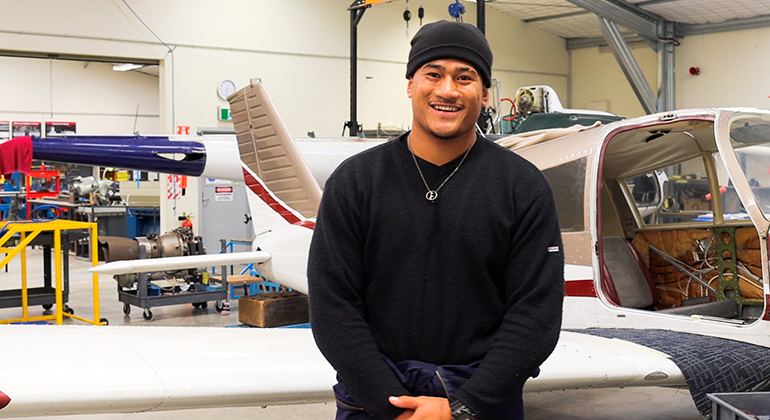E mārama ana te katoa ki ngā āheninga ahumahi, whakangūngū hoki | Everyone in the region is aware of career and training opportunities
On this page

© NMIT
Every year, a number of people either enter the workforce for the first time, re-enter the workforce or look to change careers. To make informed decisions, people need to be aware of what opportunities there are in Marlborough and what types of training are required for different jobs. There are many great careers available in Marlborough including in aviation, building and construction and aged residential care, but there is a lack of awareness of these opportunities.
People entering the workforce for the first time
Each year, about 450 people finish school and roughly 200 school leavers enter the local workforce. As discussed above (in ‘Connections between schools and industry’), it is vital that young people know what opportunities are available in Marlborough. A lot of our young people leave the region after finishing secondary school. However, greater awareness of the local opportunities could help them to understand the potential for pursuing a career in Marlborough.
“Young people don’t realise the range and extent of jobs and industries.”
People re-entering the workforce
Each year a number of people re-enter the workforce. This is usually from an extended time out of the labour market for reasons such as unemployment, health issues and caring responsibilities. We have 1,100 people who are unemployed as well as about 13,000 people who are not in the labour force. Many of these people will be retired and may have no plans for future employment. However others may be interested in finding employment.
Household Labour Market Survey December 2021(external link) — StatsNZ
These people need to be aware of what opportunities are on offer in the region and how to best access them. They may also need extra support with job applications and interviews, or career advice to understand how their skills could be applied. This means that career services, and education and employment initiatives should focus on learners at all stages, rather than just school leavers.
People changing roles
Each year, on average 20% of people switch jobs. Research shows that about 12% of people in Marlborough change jobs and the industry that they are working in annually (e.g. retail to admin). This compares to about 2% of the workforce that change jobs, stay in the same industry and stay in Marlborough (e.g. cellar hand to wine maker). This means that we have a large number of people who are either retraining or transferring their skills to another role.
Job-to-job transitions and the regional job ladder [PDF 1 MB](external link)
People can be forced to change roles due to labour market downturns or changes to roles. A 2020 study found that Māori and Pasifika are much more exposed to labour market fluctuations than Europeans.
Labour Market Cycles across Different Groups: What Does History Tell Us? 2022(external link) — Reserve Bank of New Zealand
When people are changing industries, they will often need to learn and earn at the same time. This means that education and training need to be provided in ways that enable people to continue earning, such as online or on the job training. Training and education also needs to be provided locally, as often people have family or work commitments that mean they aren’t able to relocate to retrain. We currently see this with nurse training which is provided in Nelson but not in Marlborough, and aquaculture training which can mostly be studied online but requires students to travel to Nelson for block courses.
Actions for year one
Research best practice examples of industries that have taken actions to communicate career and training opportunities
Advocate for local data collection, presentation and insights that are relevant to Marlborough, and relevant for our key stakeholders – for example, iwi/Māori data analysis
Connection to Te Tauihu Intergenerational Strategy
Pūtea – Economy: Developing new skills development and retraining people with a focus on building a more technological literate workforce in health, education and entrepreneurship.
Tangata – People and Communities: Working force retraining, redeployment and lifelong learning initiatives.
How this contributes to our vision for the future of Marlborough
Outcome one: A resilient, sustainable economy and workforce
- The workforce and local industry are multi-skilled and adaptable to change.
Pathway one: diverse opportunities for meaningful employment
- Businesses offer career pathways and development supported by training options offered locally, either in person or online.
Pathway three: People are attracted to live and work in and from Marlborough
- People see the opportunities in Marlborough and want to live here.
- We have a 21st century education system that supports lifelong learning.

